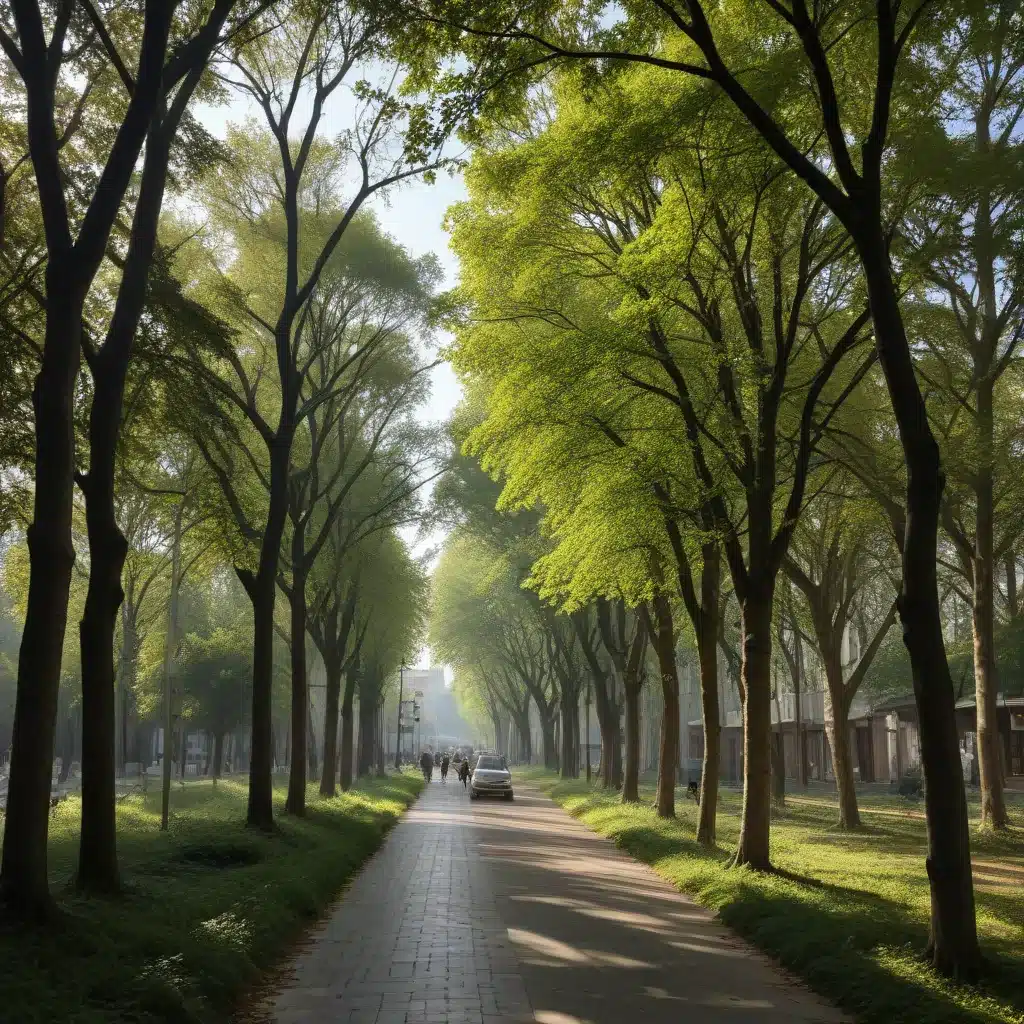
Belgrade, the bustling capital of Serbia, has a rich and dynamic urban landscape shaped by its geographical setting and historical development. At the heart of this vibrant city lies its urban forest – a network of trees and greenspaces that provide a range of ecosystem services and contribute to the city’s unique character. As a tree care specialist with TriCounty Tree Care, I’m excited to delve into the composition, structure, and diversity of Belgrade’s urban canopy, and explore the implications for urban planning and community well-being.
Urban Tree Canopy
The urban tree canopy of Belgrade is a complex and multifaceted system, reflecting the city’s diverse ecological zones and land use patterns. Compositionally, the canopy is dominated by a mix of deciduous and evergreen species, with native Serbian oak (Quercus robur), European beech (Fagus sylvatica), and Scots pine (Pinus sylvestris) being the most prominent. Interspersed throughout the cityscape are also non-native ornamental species, such as Ginkgo biloba and Platanus × acerifolia, which add visual interest and functional diversity to the urban forest.
In terms of structural diversity, Belgrade’s urban canopy exhibits a range of age classes and growth forms. The city’s historical core is home to many mature, large-stature trees, while newer development areas feature a greater proportion of younger, smaller-statured individuals. This variation in tree size and age contributes to the canopy’s three-dimensional complexity, providing a rich tapestry of light, shade, and microclimatic conditions.
Importantly, the species diversity of Belgrade’s urban forest is relatively high, with over 80 different tree taxa documented. This diversity is crucial for enhancing the canopy’s resilience to pests, diseases, and environmental stressors, and for supporting a wide range of urban biodiversity, from birds and pollinators to small mammals and invertebrates.
Urban Ecology
The urban trees of Belgrade play a vital role in the city’s ecosystem services, providing a range of benefits that enhance the quality of life for residents and visitors alike. Through their canopies, the trees intercept rainfall, reducing stormwater runoff and mitigating the risk of flash flooding. Their extensive root systems also help to stabilize soils and prevent erosion, particularly in the city’s hilly areas.
In addition to these hydrological functions, Belgrade’s urban trees also play a crucial role in climate change mitigation. The trees’ photosynthetic processes remove atmospheric carbon dioxide, while their evapotranspiration helps to cool the surrounding air, counteracting the urban heat island effect. This cooling benefit is particularly valuable during the city’s hot, dry summers, providing much-needed respite for residents and reducing the strain on energy-intensive cooling systems.
Beyond their ecosystem services, Belgrade’s urban trees also contribute to the city’s biodiversity. The diverse canopy structure and mix of native and non-native species provide habitat and resources for a wide range of urban wildlife, from birds and small mammals to pollinating insects and other invertebrates. This biodiversity, in turn, enhances the overall ecological resilience of the urban landscape, making it better able to withstand environmental disturbances and adapt to changing conditions.
Belgrade’s Urban Landscape
Belgrade’s urban landscape is characterized by a unique blend of topographical, climatic, and land use features that have shaped the development of its urban forest. The city’s hilly terrain, with the Sava and Danube rivers converging at its core, creates a varied and complex microclimatic environment. This, in turn, influences the species composition and growth patterns of the urban trees, with certain species thriving in the city’s sheltered valleys and others better adapted to the exposed, windier ridges.
Over the past century, Belgrade has undergone rapid urbanization, transforming from a historic city-fortress to a modern, dynamic metropolis. This process of development has had a profound impact on the urban forest, with land use changes and infrastructure expansion leading to the loss of significant tree cover in some areas. However, the city has also made concerted efforts to preserve and enhance its green infrastructure, with urban greening initiatives and policies aimed at maintaining and expanding the urban canopy.
Urban Tree Analysis
To better understand the composition, structure, and dynamics of Belgrade’s urban forest, remote sensing techniques have been employed, leveraging both aerial imagery and satellite data. These advanced analytical tools have allowed researchers to map the spatial distribution of tree cover, quantify canopy density, and identify areas of change over time.
Spatial analysis of Belgrade’s urban canopy has revealed some interesting patterns. The city’s historic core and residential neighborhoods tend to have the highest tree densities, while commercial and industrial areas often exhibit lower levels of canopy cover. This uneven distribution highlights the need for targeted urban greening strategies to ensure that all residents have equitable access to the benefits of the urban forest.
Implications for Urban Planning
As Belgrade continues to evolve, the city’s urban forest will play an increasingly crucial role in shaping its sustainability and livability. By adopting an ecosystem-based approach to urban planning, Belgrade can harness the multifunctional benefits of its urban trees, integrating them into a green infrastructure network that enhances the city’s resilience and quality of life.
Key policy considerations for Belgrade’s urban forestry management include:
- Expanding canopy coverage: Implementing strategic tree planting programs and protecting existing trees to increase the overall extent and density of the urban canopy.
- Enhancing species diversity: Promoting the use of a diverse palette of native and climate-adapted tree species to bolster the urban forest’s ecological resilience.
- Engaging stakeholders: Fostering collaborative partnerships between municipal authorities, community groups, and local arboricultural professionals to ensure the long-term stewardship of the urban forest.
By prioritizing the ecosystem services and ecological benefits of its urban trees, Belgrade can position its urban forest as a cornerstone of its sustainable development and climate adaptation strategies. This holistic, nature-based approach to urban planning will not only improve the environmental quality of the city but also enhance the well-being and quality of life for all its residents.


